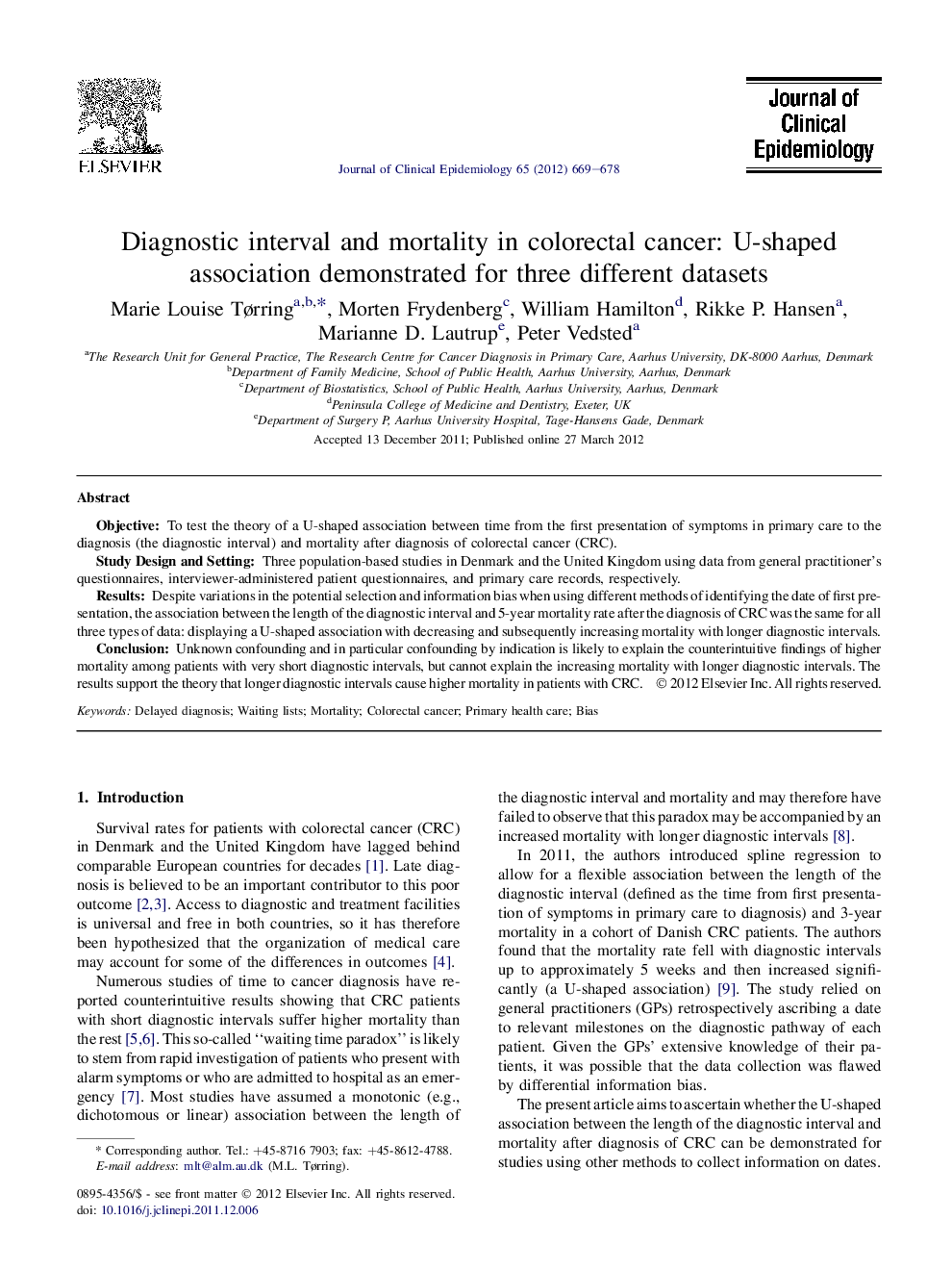| Article ID | Journal | Published Year | Pages | File Type |
|---|---|---|---|---|
| 1082469 | Journal of Clinical Epidemiology | 2012 | 10 Pages |
ObjectiveTo test the theory of a U-shaped association between time from the first presentation of symptoms in primary care to the diagnosis (the diagnostic interval) and mortality after diagnosis of colorectal cancer (CRC).Study Design and SettingThree population-based studies in Denmark and the United Kingdom using data from general practitioner’s questionnaires, interviewer-administered patient questionnaires, and primary care records, respectively.ResultsDespite variations in the potential selection and information bias when using different methods of identifying the date of first presentation, the association between the length of the diagnostic interval and 5-year mortality rate after the diagnosis of CRC was the same for all three types of data: displaying a U-shaped association with decreasing and subsequently increasing mortality with longer diagnostic intervals.ConclusionUnknown confounding and in particular confounding by indication is likely to explain the counterintuitive findings of higher mortality among patients with very short diagnostic intervals, but cannot explain the increasing mortality with longer diagnostic intervals. The results support the theory that longer diagnostic intervals cause higher mortality in patients with CRC.
